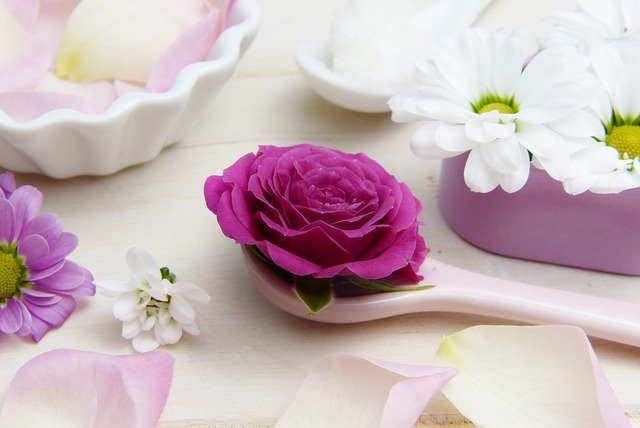Pamacrystial Plant Care: Mastering the Art of Growing a Rare Gem
Pamacrystial Plant Care: Mastering the Art of Growing a Rare Gem

Introduction
When it comes to rare and exotic houseplants, the pamacrystial is truly a hidden gem. With its dazzling crystalline leaves that catch the light in the most magical way, it’s no wonder plant enthusiasts go crazy for it. But let’s face it, caring for unique plants like this isn’t always straightforward. If you’ve recently brought one home and feel a little lost on how to care for it, don’t sweat it—you’re not alone! In this comprehensive guide, we’ll dive deep into pamacrystial plant care, covering everything from the basics to more advanced techniques. So whether you’re a seasoned plant parent or a beginner looking to try your hand at something new, we’ve got you covered. Ready to transform your pamacrystial into the stunning centerpiece of your home? Let’s get growing!
What Exactly Is the Pamacrystial Plant?
Before we get our hands dirty (literally), let’s take a moment to understand what makes this plant so special. The pamacrystial isn’t your everyday houseplant. Its vibrant, crystal-like leaves almost look like they’ve been dipped in sunlight, offering an eye-catching display that adds a touch of magic to any room. Originating from tropical climates, the pamacrystial thrives in warm, humid environments—much like a diva in a spotlight. But don’t worry, with the right care, even the most temperamental plants can flourish in your living room.
Key Features of the Pamacrystial:
- Unique Leaves: Translucent and light-catching, these leaves resemble tiny crystals.
- Size: Usually grows to about 1-2 feet tall indoors.
- Origin: Tropical regions, primarily Southeast Asia.
- Light Requirement: Bright, indirect light.
Now that you’re familiar with the pamacrystial’s star qualities, let’s get into the nitty-gritty of keeping this beauty alive and thriving.
Basic Pamacrystial Plant Care: The Essentials
1. Light Requirements
If there’s one thing your pamacrystial absolutely adores, it’s light—just not too much of it. Unlike some other tropical plants, the pamacrystial prefers bright, indirect light. This means placing it near a window with filtered light or in a room that gets plenty of natural sunlight without direct exposure. If you’re worried about scorching those delicate leaves, you can always throw up a sheer curtain or move the plant a little farther from the window.
Pro tip: If you notice the leaves looking dull or losing their sparkle, they might not be getting enough light. On the flip side, yellowing or browning leaves can indicate too much direct sunlight.
2. Watering: Finding the Sweet Spot
When it comes to pamacrystial plant care, overwatering is a big no-no. This plant likes its soil moist but not waterlogged. Stick your finger about an inch into the soil—if it feels dry, it’s time for a good soak. However, if the topsoil is still moist, hold off on the watering for a few more days.
Make sure your pamacrystial is in a well-draining pot to prevent water from pooling at the bottom. Too much water can lead to root rot, and once that happens, it’s tough to bring your plant back to life.
Key watering tips:
- Water once the top inch of soil is dry.
- Avoid letting the plant sit in water.
- Mist the leaves occasionally to maintain humidity.
3. Humidity and Temperature: Mimicking the Tropics
The pamacrystial is a tropical plant, so it loves warm, humid environments. Ideally, you want to keep the room temperature between 65°F and 80°F (18°C to 27°C). If the air in your home is on the dry side, consider using a humidifier or placing your plant on a tray with water and pebbles to boost moisture levels.
Humidity hacks:
- Mist the leaves once or twice a week.
- Use a humidity tray or humidifier.
- Keep it away from drafty windows and air conditioning vents.
4. Soil: The Right Mix Matters
When it comes to soil, your pamacrystial isn’t too fussy, but it does best in a mix that provides good drainage and retains some moisture. A blend of potting soil with added perlite or orchid bark works wonders. This combo gives the roots plenty of room to breathe while also preventing excess moisture buildup.
5. Fertilizing: Boosting Growth
To keep your pamacrystial healthy and thriving, feed it a balanced, water-soluble fertilizer every four to six weeks during the growing season (spring through early fall). Skip the fertilizer during the colder months, as the plant’s growth slows down. Over-fertilizing can cause more harm than good, so stick to a regular feeding schedule and avoid going overboard.
Advanced Pamacrystial Care: Taking It to the Next Level
Once you’ve mastered the basics, it’s time to up your game with a few advanced pamacrystial plant care techniques.
Pruning: Keeping It in Shape
Regular pruning helps maintain the shape and size of your pamacrystial, especially if it’s growing a little wild. Snip off any yellowing or dead leaves, as they can sap energy from the plant. Also, trimming back overgrown branches encourages new growth and keeps your plant looking neat and tidy.
When to prune:
- Anytime you notice dead or yellowing leaves.
- When the plant starts to look too leggy or out of shape.
Repotting: Room to Grow
As your pamacrystial matures, it might outgrow its pot. If you notice roots poking out of the drainage holes or the plant seems to have stopped growing, it’s probably time to repot. Choose a pot that’s one size larger and make sure it has drainage holes. Repotting every two to three years is typically enough to keep your plant happy.
Signs it’s time to repot:
- Roots are visible through drainage holes.
- The plant seems stunted or isn’t growing.
- Soil dries out quickly after watering.
Dealing with Pests
Like any houseplant, your pamacrystial may attract pests like aphids or spider mites. If you notice small, discolored spots on the leaves or a sticky residue, it could be a sign of infestation. Wipe down the leaves with a damp cloth or use a natural insecticidal soap to get rid of these pesky invaders.
How to prevent pests:
- Keep your plant clean by dusting its leaves regularly.
- Check for signs of pests when you water.
Common Questions About Pamacrystial Plant Care
1. Why are my pamacrystial’s leaves turning yellow?
Yellow leaves can be a sign of overwatering, too much direct sunlight, or even a lack of nutrients. Try adjusting your care routine and see if the plant improves.
2. How often should I water my pamacrystial?
Water when the top inch of soil feels dry. This usually means watering every 7-10 days, but it depends on your home’s humidity and temperature.
3. Do pamacrystial plants need a lot of light?
They prefer bright, indirect light. Too much direct sunlight can scorch the leaves, while too little light can cause the leaves to lose their sparkle.
4. Can I propagate my pamacrystial plant?
Yes! Pamacrystial plants can be propagated through stem cuttings. Simply cut a healthy stem, let it dry out for a day or two, then plant it in moist soil. Keep it in a humid environment until new growth appears.
Conclusion: Nurture Your Pamacrystial to Thrive
Pamacrystial plant care might sound tricky at first, but with the right approach, it’s totally manageable! From providing the perfect lighting to mastering watering techniques, you’ll be well on your way to keeping this rare gem happy and healthy. Don’t forget to give it a little extra love by pruning, repotting, and keeping an eye out for pests.
In no time, your pamacrystial will be the star of your indoor garden, showing off its beautiful, crystalline leaves for everyone to admire. Happy growing!



